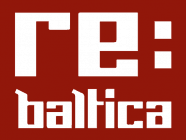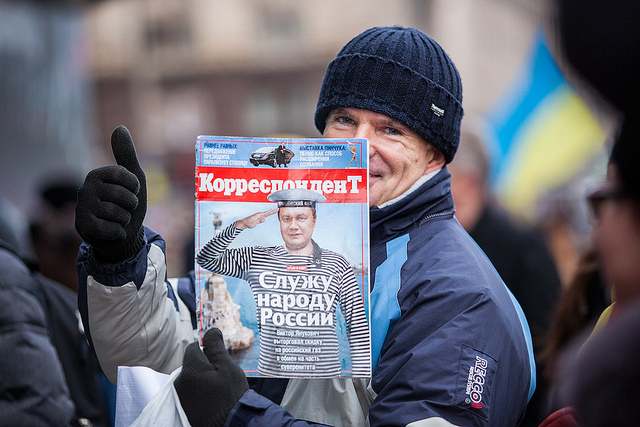Communications researchers and journalists could stand to learn a great deal from one another, yet in Germany and the U.S. an invisible wall seems to separate the two fields.
Imagine your physician tells you, “What medical scientists research at universities is irrelevant to my work as a physician. Therefore, I don’t read medical journals.” Would you continue to trust this doctor?
At an editorial meeting, however, if a colleague argues that media research doesn’t pertain to his career, he might receive an approving nod. This is not entirely wrong. For example, the majority of communications researchers at German universities haven’t even written journalistic blurbs. Then again, journalists who report on business or review operas often do not require the same credentials as CEOs or tenors might.
Let’s look closely at the relationship (or lack thereof) between journalism and the study of communications. How many researchers are visible in the media? And are the results of communications research transferred to practice and the public?
These questions are at the core of Leoni Klump’s thesis, titled “Media Professors.” From hundreds of communications researchers, she selected those most visible in the German-speaking media (aside from the author of this article, Message publisher Michael Haller was among them). Klump’s findings are not surprising: Media and communications scientists have a profoundly disturbed relationship with the mass media and the public, as researchers are often incapable of translating data in ways that appeal to journalists or interested laymen. Journalists, on the other hand, have a limited demand for research generated by communication studies.
But why is this so? Is it naive to suspect that if journalists would only get involved with research they might learn something useful, perhaps even enhance their work? And wouldn’t media researchers have more fun if their findings were processed and discussed in public rather than in small, exclusive circles of colleagues?
U.S. media under pressure
In the U.S. there are hundreds of sub-specialties within the field of journalism and mass communication, in addition to thousands of communications scientists and journalism professors. At the same time, a need for “old media” in the U.S. (particularly newspapers) is declining. One would think that all the available experts would mobilize in order to resolve such a crisis – yet does knowledge transfer better under such circumstances?
Roughly 30 American media experts – communications scientists, journalism professors, publishing managers, trade association officials, journalists – participated in a study aimed at providing the first clues. Participants were asked which newspapers and scientific research they found “innovative” and which research institution would be the leader in transmitting such knowledge. The study’s questions attempt to shed light on whether media experts might share the same ideas about innovation.
Great skepticism regarding the profession
More trade journals, and some of them with higher circulation exist in the U.S. than in Germany. Some will occasionally publish articles concerning communications research, such as the American Journalism Review (AJR) and the Columbia Journalism Review (CJR). In CJR, Michael Schudson, one of the most respected U.S. media sociologists, has a column in which he discusses the results of communications research.
Each of the 30 participants was allowed to name three innovative researchers, institutions or newspapers, and a maximum of 90 innovators could have been listed.
Our assumption that successful innovators would be named by at least 20 percent (= six) of the questioned participants seemed plausible. If nominated by 10 percent (= three), one is able to draw at least “basic attention.” We suspected that only a few researchers, institutions and newspapers would receive this type of recognition.
Poynter Institute takes the lead
A more impressive result turned up among the research and transfer institutions. Taking the big lead, the Poynter Institute in Florida was elected to the Hall of Fame with 13 nominations. The advanced education center collects its own media research – for example, Mario Garcia, newspaper designer, conducted his analysis on reading behavior with eye-tracking devices at the Institute. Due to renowned seminar and online programs (including Jim Romenesko’s blog) the Institute is held in high esteem among media circles. Coming in second with six nominations is the Project for Excellence in Journalism (PEJ) of the Pew Foundation.
As for newspapers, two were able to capture interest: The St. Petersburg Times of Florida and the Lawrence Journal World of Kansas (each with six nominations). Two papers earned moderate attention: The Bakersfield Californian (five nominations) and The Oregonian in Portland (four nominations). Note that participants were asked not to nominate the large nationally visible newspapers such as the New York Times, the Washington Post, the Los Angeles Times and the Wall Street Journal.
Trade media attract attention
Our second hypothesis was that there would be a grouping effect, i.e. media professionals and journalism professors would perceive the scientific landscape in a similar way, while communications researchers would perceive the scientific scene differently, according to their own specific research focus.
This hypothesis was confirmed, and clusters formed in two areas. The Poynter Institute and the Pew Center owe their top ranking to both journalism professors and media professionals. But how can one explain such cluster effects? In all likelihood, trade media like the American Journalism Review, Columbia Journalism Review, Editor & Publisher and blogs like Romenesko’s contribute to the gleaming reputations awarded to Poynter and PEJ. This would mean, however, that trade media are not only responsible for the cluster effect, but they may also contribute to the lack of attention imparted to other research centers.
A second explanation might suggest that thinned-out editorial departments have the tendency to launch media topics through public relations more often in the U.S. than in Germany. If this is the case, Poynter und PEJ owe their visibility not only to their remarkable research, but also in part to excellent PR work.
Source: Leoni Klump, THE MEDIA PROFESSORS. (Researchers of the Mass-Media Public and Their Relationship to Mass-Media Public), MA Thesis, University of Münster, 2008.
Translated by Karin Eberhardt
Tags: communication sciences, journalists, knowledge transfer, Lawrence Journal World, Leonie Klump, Pew Center, Poynter Institute, Project for Excellence in Journalism, Research, St. Petersburg Times, The Bakersfield Californian, The Oregonian













































